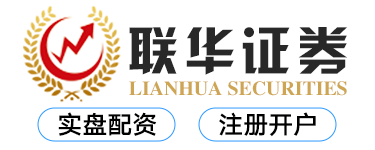
How to Find Reputable Stock Leverage Platforms in a Sea of Options?
Meta Description: Navigating the world of stock leverage platforms can be daunting. This guide helps you identify reputable, established platforms, minimizing risk and maximizing your investment potential. Learn how to avoid scams and find the best fit for your needs.
Finding a trustworthy stock leverage platform feels like searching for a needle in a haystack, doesn't it? You're brimming with ambition, ready to dive into the exciting world of leveraged trading, eager to potentially amplify your returns. But the sheer number of platforms available online can be overwhelming, even paralyzing. One wrong move, and you could find yourself entangled in a web of hidden fees, unreliable services, or worse, a complete scam. The internet is awash with promises of quick riches, but let's be real – it's a jungle out there. You need a trusted guide, a seasoned explorer to help you navigate this treacherous terrain. This article is your compass, your map, your Sherpa to the top of Mount Financial Success. We'll unveil the secrets to identifying reputable, established stock leverage platforms—platforms that have stood the test of time, proven their commitment to their clients, and offer the transparency and security you deserve. Forget those fly-by-night operations promising the moon; we're focusing on the real deal, the platforms that build lasting partnerships with their investors. We'll equip you with the knowledge and tools to assess risk, understand crucial factors like regulatory compliance and customer service, and ultimately, make informed decisions that protect your hard-earned capital. So, buckle up, because we're about to embark on a journey to uncover the hidden gems among the many online stock leverage platforms. Let's find you a platform that's not just reliable, but a true partner in your investment journey. This isn't just about finding a platform; it's about finding the right platform for you.
Identifying Established Stock Leverage Platforms
Choosing a stock leverage platform is a significant decision, impacting your financial well-being. Avoid jumping in headfirst without due diligence. Instead, approach this decision strategically. Think of it like buying a house; you wouldn't purchase without thoroughly inspecting, right? The same meticulous approach applies here. Don't let flashy advertisements or promises of unrealistic returns cloud your judgment.
Here’s what you should look for:
-
Operational History: How long has the platform been operating? A longer operational history often indicates greater stability and experience. Look for platforms with a track record spanning several years, ideally a decade or more. Newer platforms might be innovative, but the lack of a proven history presents a higher risk.
-
Regulatory Compliance: Is the platform regulated by a reputable financial authority? This is paramount. Check for licenses and registrations with relevant bodies—the SEC in the US, FCA in the UK, or equivalent agencies in your region. A regulated platform adheres to strict rules and regulations, offering greater protection for investors.
-
Client Reviews and Testimonials: What are other users saying? Read independent reviews on various platforms, avoiding those solely on the company's website. Look for consistent positive feedback on aspects like customer service, platform usability, and transparency. Negative reviews should be examined carefully to understand patterns or recurring issues.
-
Security Measures: How does the platform protect your data and funds? Look for robust security measures, including encryption, two-factor authentication, and reputable payment gateways. A platform prioritizing security demonstrates its commitment to protecting your financial information.
-
Transparency and Fees: Are the fees clearly outlined? Hidden fees can significantly impact your returns. A reputable platform will transparently disclose all fees, including commissions, interest rates, and any other charges. Avoid platforms with vague or unclear fee structures.
-
Customer Support: How responsive and helpful is their customer support? Test the responsiveness of their customer support channels. A readily available and knowledgeable support team can be invaluable when you need assistance.
Beyond the Basics: Deep Dive into Due Diligence
Going beyond the surface-level checks is crucial. Consider the following:
-
Financial Strength: Research the platform's financial stability. You can often find information on their financial statements or through independent financial analysis reports. A financially stable platform is less likely to face sudden disruptions or insolvency.
-
Technology and Infrastructure: A robust and reliable technological infrastructure is essential for seamless trading. Look for platforms with advanced trading tools, charts, and real-time data feeds. Downtime and technical glitches can severely impact your trading experience.
-
Educational Resources: Does the platform offer educational resources for new and experienced traders? Access to learning materials can greatly enhance your trading knowledge and skills.
Warning Signs to Watch Out For
Beware of these red flags:
-
Unrealistic Promises: Promises of guaranteed profits or abnormally high returns should be treated with extreme skepticism. No legitimate platform can guarantee such results.
-
High-Pressure Sales Tactics: Aggressive or pushy sales tactics often indicate a less-than-reputable platform. Take your time, do your research, and avoid feeling rushed into a decision.
股票配资专业网 -
Lack of Transparency: Avoid platforms that are vague about fees, regulations, or their operational history. Transparency is a key indicator of trustworthiness.
-
Negative News or Complaints: Search for news articles, blog posts, or online forums containing negative information about the platform. A history of complaints or lawsuits should raise serious concerns.
Leveraging Technology for Smarter Platform Selection
Today, technology offers powerful tools to aid in your search. Use them wisely!
-
Online Reviews and Forums: Explore websites like Trustpilot, Yelp, or dedicated financial forums to access user reviews and experiences. Pay close attention to recurring themes and patterns in the feedback.
-
Social Media Monitoring: Monitor social media platforms for mentions of the platform. Social media can provide valuable insights into user sentiment and potential issues.
Making the Right Choice: A Personalized Approach
The "best" platform is subjective and depends on your individual needs and risk tolerance. Consider these factors:
-
Trading Experience: If you're a novice, a platform with comprehensive educational resources and user-friendly interface is essential. Experienced traders might prioritize advanced charting tools and analytical features.
-
Investment Goals: Your investment goals will determine the type of leverage and trading strategies suitable for you. Align your platform selection with your overall investment objectives.
-
Risk Tolerance: Your risk tolerance will influence the level of leverage you're comfortable using. Choose a platform that aligns with your risk appetite.
Frequently Asked Questions (FAQ)
Q1: What is leverage trading, and how does it work?
A1: Leverage trading allows you to control a larger amount of assets than you actually own by borrowing funds from a broker. It amplifies both profits and losses. For example, 1:10 leverage means you can control $10,000 of assets with only $1,000 of your own money.
Q2: Are there any inherent risks associated with leverage trading?
A2: Yes, leverage trading carries significant risk. Losses can be magnified just as profits can be. It's crucial to understand the risks involved and only trade with capital you can afford to lose.
Q3: How can I protect myself from scams in the stock leverage market?
A3: Thorough due diligence is key. Verify the platform's legitimacy, check for regulatory compliance, read reviews, and avoid platforms promising unrealistic returns.
Q4: What are the key differences between various stock leverage platforms?
A4: Platforms vary in their fees, leverage ratios, available assets, trading tools, and customer support. Carefully compare these aspects before choosing a platform.
Q5: What should I do if I encounter problems with a stock leverage platform?
A5: Contact the platform's customer support immediately. If the issue remains unresolved, consider contacting the relevant regulatory authority in your jurisdiction.
Q6: Is it possible to lose more money than I initially invested in leverage trading?
A6: Yes, this is a significant risk of leverage trading. The borrowed funds amplify losses, potentially leading to losses exceeding your initial investment. This is why risk management is paramount.
Conclusion
Choosing the right stock leverage platform is vital for success. Thorough research, careful consideration of your needs, and a healthy dose of skepticism are essential steps. By following the guidelines outlined in this article, you can significantly increase your chances of finding a reputable and reliable platform that supports your investment journey. Remember, it's not just about finding a platform; it’s about finding a partner you can trust. So, do your homework, take your time, and make informed decisions that protect your capital and pave the way for a successful and rewarding investment journey!
文章为作者独立观点,不代表财盛证券观点






